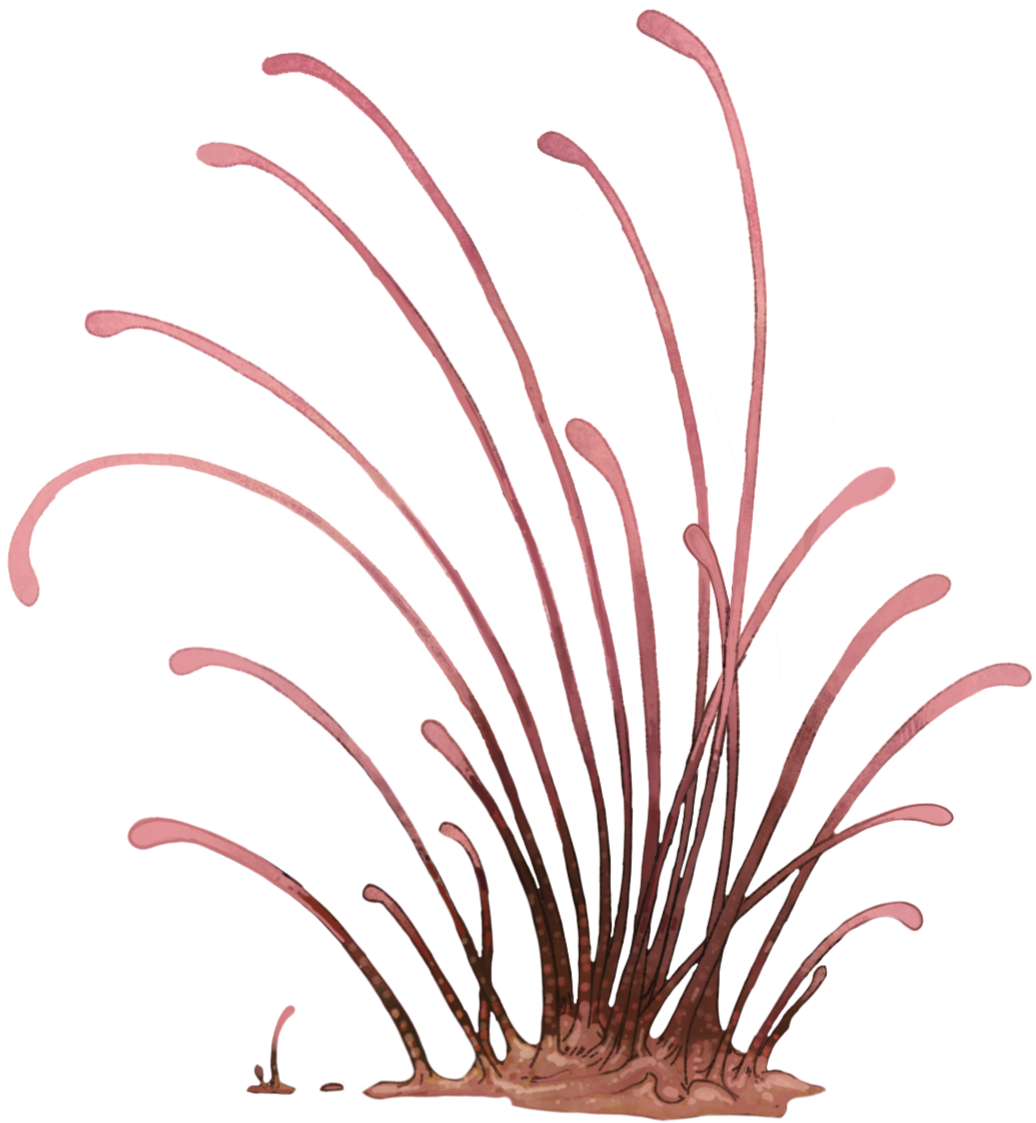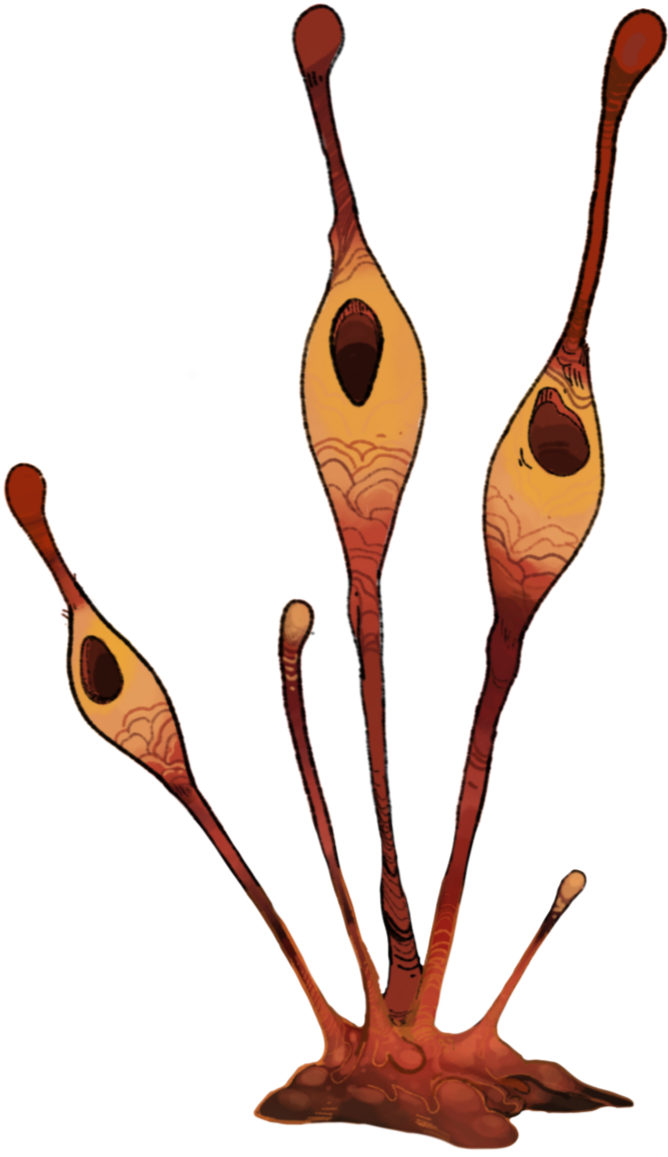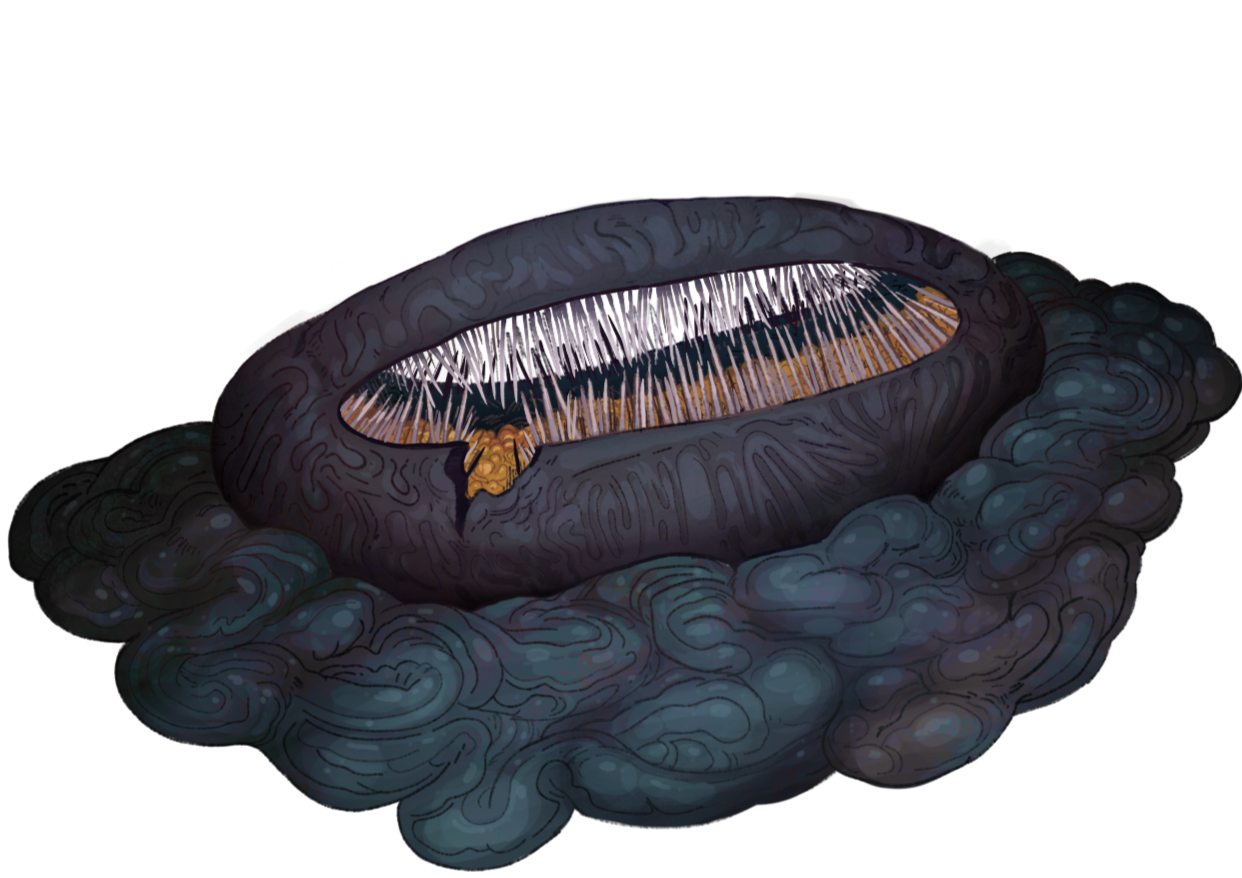Trylloids
Liveglues
“Liveglue” is an umbrella term for all of the simplest trylloids. They’re formless, often sticky (hence the name), and common to almost any surface not regularly disinfected, or made explicitly to dissuade their growth. There is no particular way of living common to every single liveglue: what they feed on, where they live, and how they reproduce, etc, varies wildly. Many feed on biofilms or extract nutrients from the soil, some photosynthesize, others tap deep into the veins of the city to drink the essence of the Sarchi. Still others metabolize the metal of the city itself, becoming the architects of ecosystems as they eat, live, die, and slowly reduce the hard walls to soil.
Gluefoots

Gutterwhiskers
Common, reedy gluefoots that form dense stands in areas of high moisture. They rely on the
movement of creatures through their stalks to scatter their spores and propagate their bases. While they
reproduce sexually, they do not have dedicated ‘eggs’, and instead use a form of budding. Their stalks both
disperse and collect gametes, which are transported down to their bases and injected into nuclei there. The
genetic composition of their bases is therefore highly mosaic. This mosaicism is not expressed due to hormonal
suppression of these child nuclei by the more dominant ‘parent’ nuclei, of which the former were originally
clones.
The base is extremely sticky, and clings to the feet of anything that passes through the gutterwhisker stands.
If this material is tracked to a new place that is sufficiently moist, the child nuclei begin to construct
new stands. The first nuclei that begin to express themselves become dominant over any other nuclei also
contained in the new organism.
Because one ‘body’ contains both parent and children cells, the death of the parent often goes unnoticed
barring the complete destruction of the organism. When Parent nuclei die, formerly repressed ones take over,
and the plant becomes its own child. This process gives these stands the apparent illusion of indefinite
lives.
While they grow near water, they don't tolerate being submerged, and will attempt to slowly crawl away
if things get too wet.

Nestreeds
Nestreeds evolved from a gutterwhisker-like ancestor that had developed cavities in its stalks. Insects and other small creatures took up residence in these cavities, and the waste they deposited around the base of the organism provided enhanced nutrition. While the coming and going of these residents between stalks helps spread their spores, they still rely on animal traffic to propagate their bases. Over all, nestreeds are more cryptic than hoopflowers.

Hoopflowers
Hoopflowers evolved from nestreeds that developed a second opening in their cavities, allowing any potential pollinators inside a better chance at escape. Over time, both openings enlarged, and the cavity was reduced to a narrow band, hence the name. Many hoopflowers have nectar producing glands embedded inside the inner walls of their hoops, all surrounded by a forest of spore-producing filaments that enterprising pollinators must search through to find them, of course.
Common Hoops
The most basal and widespread members of the hoopflower family.
Fanged Hoops
Fanged hoops are hoopflowers with heterogeneous filaments: in addition to the standard spore-bearing filaments, some have lost their reproductive capacities to become hard and needle-like. In many species these needles are longer than the rest of the filaments, and serve to protect these reproductive structures from predation by grazers.

Toothbaskets: Fanged hoops that lack a visible stem.The greatly enlarged hoop lays flat against the base, which sprawls out from around it in a twisting puddle. While the hoop itself is quite large, the opening is narrow, and guarded by rows of needle-like spines. Toothbaskets seem to have a love-hate relationship with the herbivores they try so hard to keep from feasting on their succulent fronds, as they produce a very attractive smell that draws those same beasts towards them. This is a ruse, however. The base is filled with air-pockets that burst when stepped on, making an alarming noise and releasing a repugnant smell. The plants rely on this tactic to scare the would-be diners away, but only after splattering them with their spores.